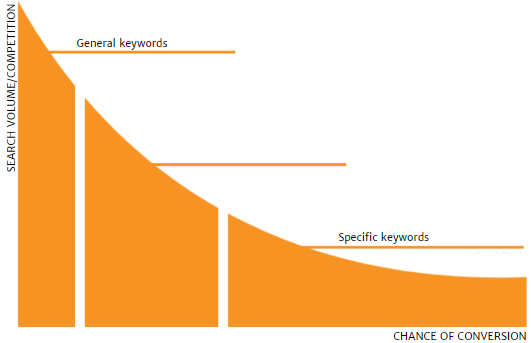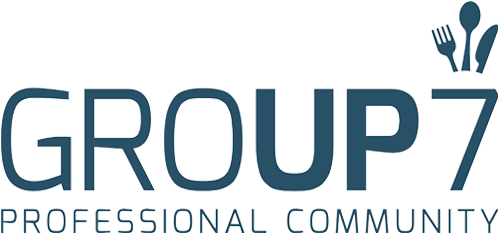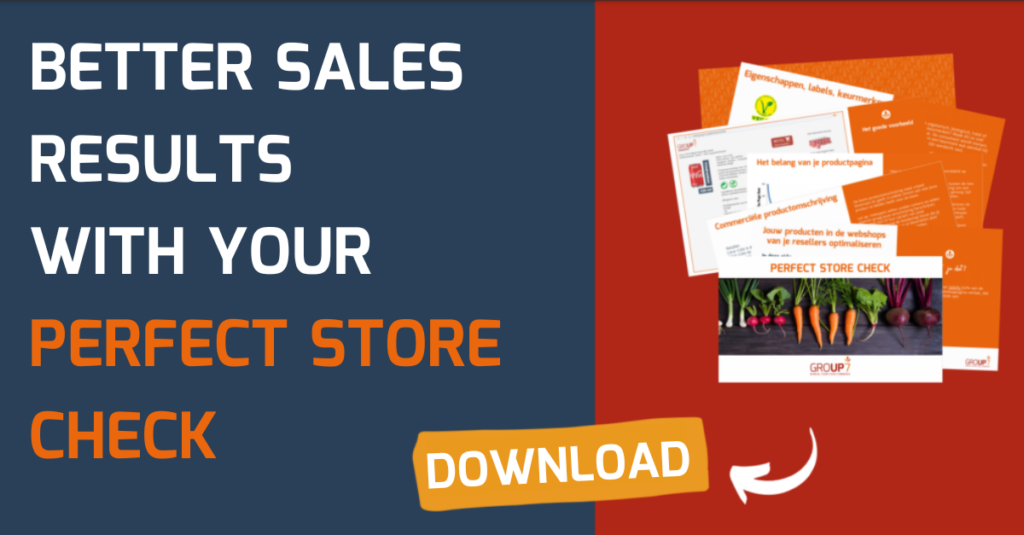As a marketer, you certainly already know it’s no longer possible to ignore Google and its competitors. Search engines are also often used inside websites and webshops, for example at your wholesaler. Much less sophisticated, but based on the same principle.
For many years now, search engines have been determining what products online shoppers see and, to some extent, where they buy their products. While there may be hundreds of options, visitors don’t generally look beyond the first page of search results. If you are not one of those “top ten”, the likelihood of getting visitors via this route is very low. And if you think that top 10 is only for the absolute biggest brands, with gigantic budgets…
then this blog will be a real eye-opener for you.
Even if you aren’t selling anything yourself on your own website or webshop, search engine optimisation is incredibly important for you. Although the influence is more limited, you can also improve the findability of the product pages for your range with your distributors. If you put some effort into the findability of your product pages, you increase the chances of visitors reaching your most relevant options. If they actually land on that most relevant option, then there are very good chances that they will buy your product. If not, then they probably won’t buy anything.
Optimising your own webshop and that of your online distributors is what we call ‘Perfect Store’. You try to set up your webshop to sell as effectively as possible, if not perfectly. We wrote an article earlier on the importance of the ‘Perfect Store’ concept for wholesalers. You can find that article here.
The concept behind SEO
Ranking high on search engines has become a real game of strategy. Marketers invent tricks and either implement them or pass them on to all their customers. Search engines figure out how they are being influenced and adjust their algorithms accordingly. And the game starts all over again. So there is no such thing as an exact science when it comes to SEO, and if that did exist, it would have a short shelf life. But there are certainly a few basics that you can benefit from right away.
In the end, it’s all about one principle: it is crucial for Google and for your wholesale business to understand exactly what a visitor is looking for, in order to redirect them to the most relevant place. A company like Google puts an enormous amount of effort into that, which is why they are the biggest, most commonly used option. To assess the relevance of your product page, they look at the search terms entered and compare them with the content and technical specifications of your page. That very combination contains one of the often overlooked features of SEO. Because besides the content of your website or product page, which we will talk about in detail later, you can also
influence the search terms that are included in this comparison. Here, you are working on your keyword strategy.
Which keywords can you use to get ranked?
When you work on your own website, you will be asked to fill in some fields to boost your SEO. One or more of these areas will provide space to enter keywords that you think are relevant to your page. They are essentially asking: “Which searches do you think we should show your page with?” This method is also used with some wholesalers’ websites, for example with Bidfood. You can also enter keywords there that you think you can respond to with relevant content.
One common mistake made with keyword strategy is to stay too general and therefore end up lost among a very long list of competitors. You could try to have your page compete for the search term “crisps”. Especially if you are marketer at Lay’s and have been the number one brand of crisps for years. But where you really want to be found is with “super chips” and “strong chips”. The idea behind this approach is that the more specific the search, the more likely the people are ready to buy. Those are exactly the kind of people you want to attract to your page. They are the ones who are more likely to actually fill their shopping carts rather than just browse around.
- The more specific the search terms, the higher the chances that people will actually want to buy.
- The more general the search terms, the greater the number of browsing visitors.
In other words, don’t be afraid to choose more specific keywords. There will be fewer searches with these terms, but your likelihood of getting these visitors redirected based on relevance will be many times higher. And so too your sales numbers.
Tip: There are several tools that can help you identify keywords. Even free tools, to help you get acquainted. You can find an overview here

Content
Search engines, including both the major internet search engines as well as wholesaler search engines, for example, scan the content and the relevance of your product page. Written content is easy to recognise and interpret for this process.
When it comes to content, you can truly make a difference. While most of us are well aware of that, writing content can still be quite a daunting task. And that’s why we still frequently come across product pages with descriptions such as ” Deliciously sweet” or “Made in France”. Trust us, you’ll need a lot of luck for those keywords to help you welcome any relevant visitors.
The most important piece of content on a product page is usually the product title. This often tends to be the title of the web page as well, which means it will usually weigh more heavily in search results than your other content. A “Perfect Name” consists of a brand name, product name, possibly a product type, the packaging and its contents.
Example: GROUP7 banana cakepre-cut, 800g box
Product descriptions, the place to go wild
All of the information you want to say about your product can be incorporated into the commercial or long description in particular, a field where you have space for about 200 to 300 words. This is where you inform your visitors about all the features and benefits of your product. Leave out any jargon and don’t use abbreviations.
And be sure not to use the same words over and over again; choose synonyms. This will make for a much more pleasant read and will also allow you to show up in search results with more keywords. For example, you can use the word “plant-based” in addition to “vegan” and “low-carb” alongside “fewer carbohydrates”. The GROUP7 banana cake description includes “cake with banana” in order to also capture “cake banana” searches.
Also don’t forget to incorporate a product’s application in your description. More often than not, visitors are actually looking to fulfil a need rather than for a specific product feature. A business owner who searches for ‘soft drinks’ is probably not looking for a product he already knows. Otherwise, he would have entered Fanta or Pepsi. He is likely researching other options to fill a gap in his current offer. And he might just end up on your page here. But, as we mentioned earlier in this article, that does not guarantee that he will actually purchase your product. But you have a better chance if you can trigger him using a description where he can find what he was looking for.
For instance, your product could be a very sustainable option, or a healthy alternative. A soft drink designed to be used in cocktails, or one that has a very sophisticated look. If you believe your soft drink can serve a specific role in your potential customer’s product range, describe that role and take your reader through how your product can fit into their portfolio.
- Paint a picture of the moment it is consumed.
- Make suggestions on what other products this item would pair well with.
- Describe any preparations thoroughly
- Provide some inspiration on serving options.
This content can contain all kinds of keywords that people search for. But that’s not the only reason to pay so much attention to your descriptions. If you have managed to answer all of the reader’s possible questions and the product fits his concept, then he will certainly have no more reason to doubt. He will be very close to making his first purchase.
Images and videos
Visual impressions are always more memorable than text. Always be sure to enhance your product page with images to improve sales. Now, it is actually difficult for search engines to figure out what you are displaying in your image. For this reason, always fill in the image descriptions as well, including information such as product name, brand, type and packaging. This makes the content of your page more readable, and allows search engines to see that your photo or video is in line with the rest of your page.
Unique content
It is often the case that your products will be offered in several different places. PS in Foodservice is a very good and practically essential service when it comes to delivering product information to a sales channel. But in practice, it appears that one content field in particular from PS in Foodservice is literally not being utilised by the larger wholesalers. This has to do with how unique content is ranked by the major internet search engines. If Bidfood, Makro and Hanos were to publish the exact same description, Google would give these three descriptions a lower relevance ranking than for unique content.
This is why wholesalers should adapt your suggested text, or perhaps even create their own descriptions. The success rate varies, as we can safely conclude after having analysed wholesale webshops for a number of manufacturers within our Perfect Store Online project. Our advice here is as follows: Always check whether the keywords you consider important are also in the descriptions created by the wholesalers themselves. Talk about this with your wholesaler during your annual meetings or during another visit. It also works to their advantage to have your texts as sharp as
possible. This is because they attract traffic to their website through the major search engines, which ultimately benefits both the wholesaler and the brand manufacturer.
If they ask you to provide unique versions of your general description, please do so. It will earn you additional sales percentages each year. Sales you wouldn’t really capture with the real-life example below:

And one last SEO tip: temporary pages.
A tip for your own webshop, if you have one. That’s where you have full control, so you can easily apply this little trick. Otherwise, you’ll have to convince your wholesaler to use this trick too: Leave any seasonal pages that are temporary but recurring online.
This could include your summer range or your Easter specials. Yes, you should definitely remove them from your website’s navigation. That will prevent people from accidentally coming across your inspirational page for Easter brunch in August. To be fair, most visitors would consider this so irrelevant that they would continue their search elsewhere. And that could include your competitors.
But make sure those pages stay online. Why would you do that if you don’t want any visitors to see them? Google, Yahoo and Bing already know the pages and have already ranked them. When you update your page with your latest plans next year, you won’t have to wait all over again for the search engines to figure out your site. Instead, you will actually have a head start.
95% of new pages do not appear on the first page of search results in major search engines during their first year (source: Ahrefs)
More on Perfect Store
Product pages in online shops are far from perfect. In our Perfect Store Guide, you can see for yourself what to look out for when reviewing a product page. We provide you with even more tips and tricks to make more conversions on your sales pages. You can request the download using the button below.
Are you interested in truly understanding your situation and working with us to improve your online sales pages? Then get in touch with us and we can work together to identify where your quick wins are and how we can guide you to your “Perfect Store”.



